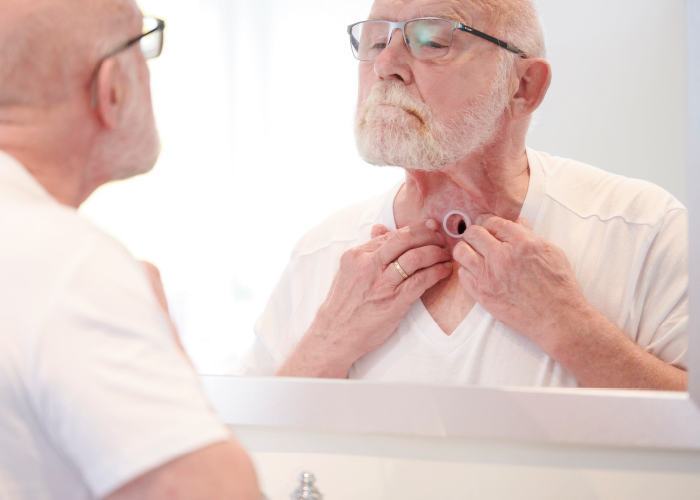The Importance of Barrier Products to Maintain Skin Health
MARSI (Medical Adhesive Related Skin Injury) related to adhesive usage is a frequent but sometimes under recognised complication. If proper technique for application and/or removal of adhesive products is not used, tissue trauma can occur, impacting patients’ quality of life, pulmonary health and the potential to voice successfully. ¹
One way to protect patients’ skin is to use a skin barrier which can come in different forms e.g. cream/wipe/film. A skin barrier protects the epidermis (or top layer of the skin) from mechanical injury and from moisture-associated skin damage (MASD). The skin barriers work by adding a protective layer that can be applied to skin that’s healthy and skin that is broken/damaged, without causing any discomfort.
According to a study into Medical Adhesives and Patient Safety ² patients should ‘Consider application of a skin barrier prior to applying an adhesive product. Skin barrier products provide a protective interface between the skin and adhesives and are recommended to reduce the risk of MARSI and to protect the skin’
Skin barriers alleviate the risk of adhesive trauma. In a study by Fumarola et al., (2020), ‘the panel recommends that skin should be protected with a barrier product before an adhesive medical device is applied and that this should be considered as a standard part of the skin-care protocol. The panel advised that skin barriers should therefore be made widely available to health professionals in all clinical areas, including emergency care, theatre, general practice surgeries, wards and clinics.’³
Bodkhe et al. (2021) also found that skin barriers significantly reduce adhesive removal force and mechanical trauma. ⁴

A good routine for patients to maintain good skin health or help heal damaged skin is important and using skin barrier products is one part of a skin care regime that can have positive impacts on skin integrity and skin health. Steps to follow for a good routine:
- Choose an appropriate adhesive e.g. hydrocolloid/hydrogel
- Clean the area with wipes
- Allow to fully dry
- Add a skin barrier product and allow to fully dry (patients shouldn't use a cream version of a barrier as it will affect the adhesion of the baseplate)
- If needed, warm the adhesives in your hands
- Wait 15 to 30 minutes before voicing to ensure good adherence to the skin
- To remove the dressing use an adhesive removal wipe to loosen the adhesive and to ensure the adhesive is lifted gently with limited removal force
To request a copy of a skin assessment tool please complete the form below.
- Atos Medical, Whitepaper: Healthy peristomal skin: a foundation for successful voice and pulmonary rehabilitation, 2023
- McNichol, L., Lund, C., Rosen, T. and Gray, M. (2013). Medical Adhesives and Patient Safety. Journal of Wound, Ostomy and Continence Nursing, 40(4), pp.365–380. doi:https://doi.org/10.1097/won.0b013e3182995516.
- Fumarola, S., Allaway, R., Callaghan, R., Collier, M., Downie, F., Geraghty, J., Kiernan, S., Spratt, F., Bianchi, J., Bethell, E., Downe, A., Griffin, J., Hughes, M., King, B., LeBlanc, K., Savine, L., Stubbs, N. and Voegeli, D. (2020). Overlooked and underestimated: medical adhesive-related skin injuries. Journal of Wound Care, 29(Sup3c), pp.S1–S24. doi:https://doi.org/10.12968/jowc.2020.29.sup3c.s1.
- Bodkhe, R.B., Shrestha, S.B., Unertl, K., Fetzik, J. and McNulty, A.K. (2021). Comparing the physical performance of liquid barrier films. Skin Research and Technology, 27(5), pp.891–895. doi:https://doi.org/10.1111/srt.13038.